Top 12 Technology Trends: The Evolution of High-Performance Backplane Technology
Backplanes using copper conductors have come a long way over the past 50 years and will likely remain the most common form of system architecture well into the future.
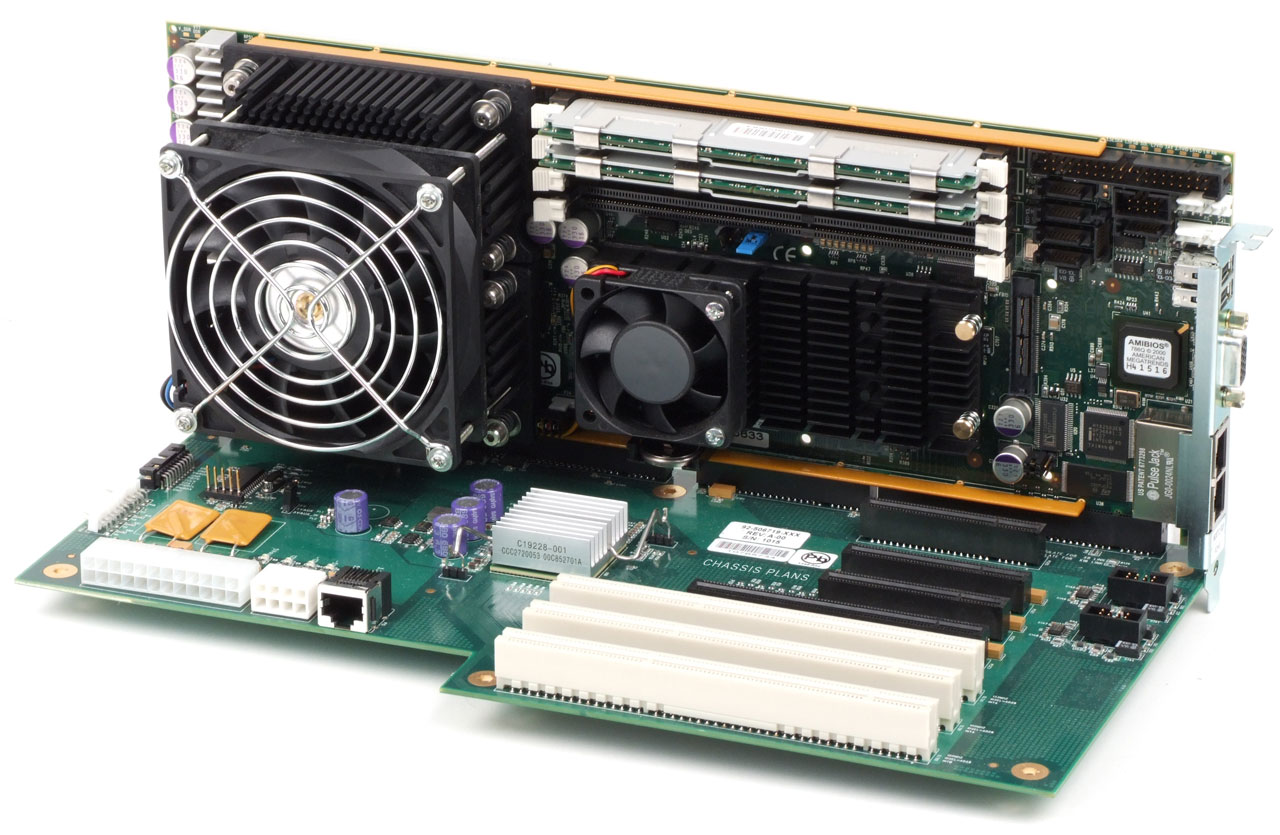
SBC-Backplane image courtesy of Rackmount-guy per CC-BY-SA 3.0.
This is the 10th installment in the Technology Trends series by Bob Hult, a collection of articles that review leading technology trends that have had a significant impact on the electronic connector industry over the past 20 years. This article reviews trends in backplane architecture.
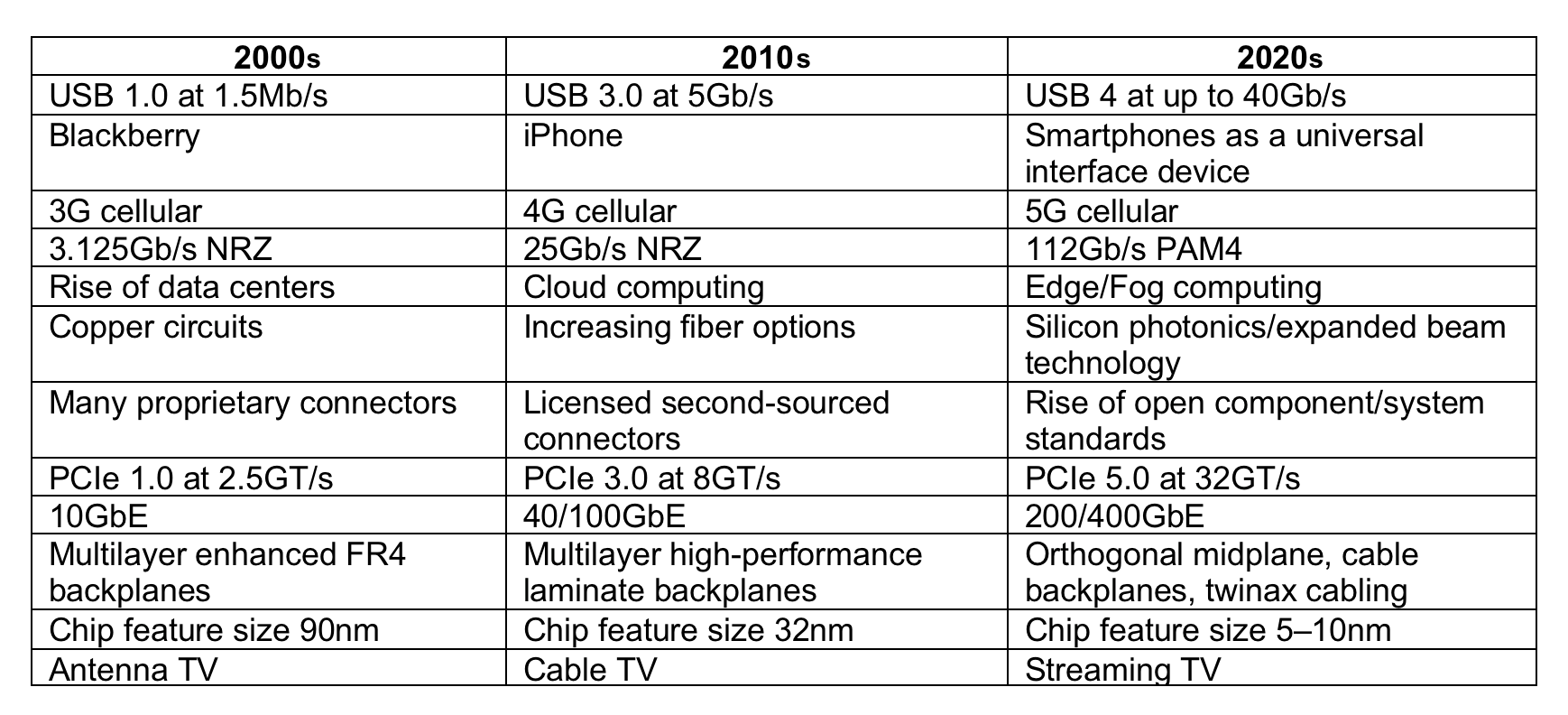
Backplane Architecture
Backplane architecture has been a mainstay of electronic system packaging for many years. By embedding interconnects between daughtercards on and in a backplane, precise electrical paths can be economically duplicated in mass production quantities. Both signal and power can be efficiently distributed by adjusting the width and thickness of the copper conductors. Electrical characteristics, including impedance, crosstalk, and skew, can be tightly controlled. The ability to plug standardized daughtercards into a motherboard simplifies repair and can extend the useful life of equipment.
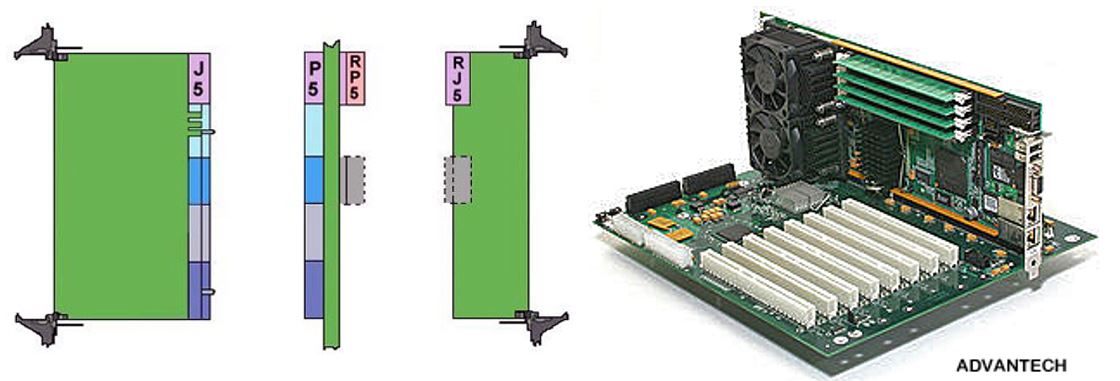
A passive backplane arrangement by Advantech.
Plug-compatible daughtercards enable the expansion and upgrade of features at competitive prices. Standards organizations such as VITA, PICMG, and PCI-SIG define specific connectors and performance expectations, simplifying and accelerating the new product design process.
Backplane material and processes have evolved to support industry demand for higher speeds, signal density, and reduced panel sizes. Simple two-sided boards have been upgraded and now have 40 layers or more. Original through-hole wave-soldered components are now available with compliant pin, compression, and surface-mount termination. The board design and layout process is now driven by detailed modeling and simulation to ensure signal integrity. Backdrilling of plated through-holes and detailed connector launch analysis have become routine aspects of backplane design. Commercial grade FR4 PCB laminate has been upgraded with more exotic epoxy, polyimide, Teflon, and glass materials that feature much improved dielectric constant and dissipation factors essential to support high-speed channels. Arcane issues such as the impact of laminate moisture content and the surface roughness of copper foil are topics of much debate.
Despite all these advances, traditional backplane architecture still suffers from laminate material losses, which become problematic when channel bandwidth rises into the gigabit range. Long channel lengths in even the most advanced and expensive PCB material can result in unacceptable performance. The solution has been a proliferation of backplane alternatives, including the elimination of the backplane itself.
Midplane Orthogonal
One possibility is the midplane, which moves the backplane forward, allowing daughtercards to mate from both sides. The channel length of traces on the midplane are greatly reduced.
Access to daughtercards from both front and back of the equipment is required.
The next step is to orient the daughtercards 90° to each other, allowing the connector to potentially span across all the opposing daughterboards. Orthogonal midplanes allow high-speed signals to pass directly through the midplane to further shorten the signal path. Copper traces on the midplane can be used to distribute low-speed signals and power. Two separate cooling airflow streams may be necessary.
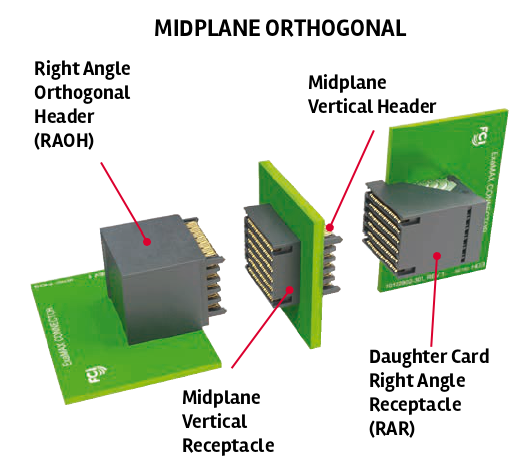
Amphenol ICC’s ExaMAX® 56Gb/s High-Speed Orthogonal Connectors support data rates of 25Gb/s with scalable migration path to 56Gb/s, making them ideal for high-density applications.
A logical extension of the orthogonal midplane was the orthogonal midplane direct configuration, which eliminates the midplane entirely with daughtercards that mate directly from each side. Modified daughtercard connectors incorporate guidance and retention features. However, orthogonal architecture can create some challenging mechanical and power distribution issues.
The connectors utilized in each of these configurations have undergone a continuous process of refinement, including optimizing the internal signal path, tightened impedance control, reduction of contact stubs, optimized footprint pattern, and reduction of the diameter of the plated through-hole. Some connector suppliers have incorporated the use of specialized plastic materials designed to damp reflections.
As system speeds moved into multigigabit data rates, designers recognized that shielded differential cable offers attenuation, crosstalk, skew, and immunity to EMI advantages that cannot be achieved using even the best PCB technology.
High-speed signals generated on daughtercards bypass the backplane and immediately transition to shielded cables, which provide a controlled signal path to other daughtercards. Cable backplanes and midplanes have been in development and limited production for five years.
The mass of cables these point-to-point connections create can become a management and repair concern with some suppliers proposing modular assemblies as field replaceable units or plug-in cassettes. Cable backplanes have been utilized in applications that require large assemblies and demand exceptional performance.
The high-speed performance advantages of shielded copper cables over embedded PCB traces have resulted in expanded use of discrete cables inside the box. Signals are transitioned to coaxial or twinaxial cable as close as possible to the ASIC, switch, or processor and terminated at another point in the machine or to the I/O panel. This “jump-over” concept reduces the signal path in PCB material to the absolute minimum and has resulted in new discrete and ribbon twinaxial cable assemblies and connectors designed for these applications.
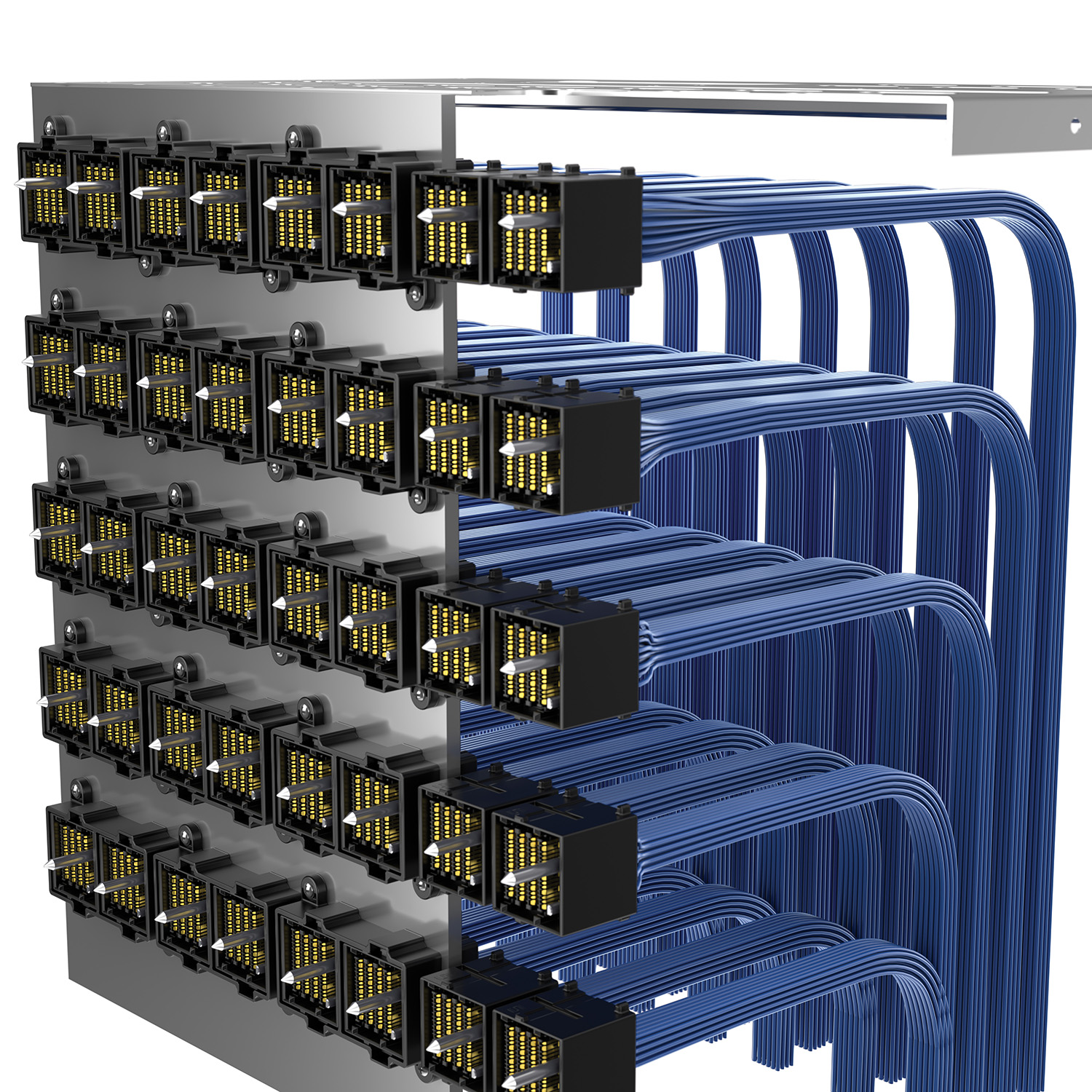
Samtec’s backplane solutions include the ExaMAX ® High-Speed connectors and the Flyover® cable systems.
Backplanes using copper conductors have come a long way over the past 50 years and will likely remain the most common form of system architecture well into the future. Performance limitations of even the most advanced PCB design and materials have begun to impact the ability to support next-generation equipment. The advent of 112+ Gb/s channels may require engineers to consider alternatives that include optical transmission that offers bandwidth headroom as well as reach unavailable in any other media. Optical backplanes that have been in development and limited use for years may finally become an attractive option.
Like this article? Check out our other Bob’s Technology Trends Series, Board-to-Board, High-Speed and Standards articles, our Datacom and Telecom and Medical Market Pages, and our 2021 and 2020 Article Archives.
- Optics Outpace Copper at OFC 2024 - April 16, 2024
- Digital Lighting Enhances your Theatrical Experience - March 5, 2024
- DesignCon 2024 in Review - February 13, 2024





